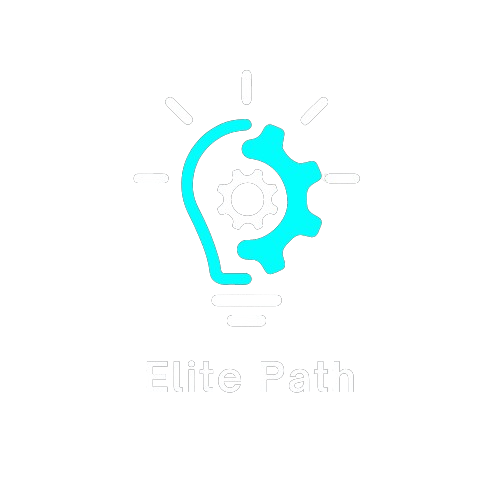What Is a Sales Appointment Setter and Why It Matters in the Sales Funnel
A sales appointment setter plays a foundational role in every results-driven sales process. They are the bridge between a cold lead and a meaningful conversation with a closer. While many associate sales with the final transaction, the appointment setter is the one initiating momentum. They reach out to leads, qualify their interest, and schedule meetings for the sales team to take over. Without this critical step, the sales pipeline can easily dry up.
Unlike closers who handle negotiations and contracts, a sales appointment setter focuses on the early stage: connecting with potential clients, gauging interest, and aligning prospects with the company’s offers. Their goal isn’t to sell directly—it’s to ensure that only the most qualified, high-potential leads make it into the hands of sales closers. In doing so, they maximize efficiency and improve the conversion rate across the entire funnel.
This role is especially vital in industries with long or complex sales cycles, such as SaaS, coaching, and high-ticket services. Businesses rely on appointment setters to keep their calendars filled and their teams focused on closing rather than chasing leads. As remote work and digital selling grow, the demand for skilled appointment setters continues to rise.
Core Responsibilities of a Sales Appointment Setter
The daily responsibilities of a sales appointment setter go far beyond just dialing numbers. Their tasks include identifying potential leads, researching their background, and initiating contact via phone, email, or social media. They often work with warm leads who’ve shown initial interest or cold prospects who require more engagement to respond. Their communication must be clear, persuasive, and tailored to the lead’s industry or needs.
Appointment setters also handle the important task of qualifying leads. This means asking key questions to determine if the person fits the company’s ideal client profile. These criteria might include budget, decision-making power, timeline, and alignment with the service or product offered. If the lead fits the profile, the setter schedules a call or demo with a closer or sales rep.
In addition to prospecting and qualifying, setters are often tasked with maintaining accurate records in CRMs. They update notes, track conversations, tag prospects appropriately, and move them through the pipeline stages. Some setters also handle follow-up messages and reminders to reduce no-show rates.
Cooperation with sales teams is a must. Setters work closely with closers to relay important context gathered during calls. This makes sales conversations smoother and more tailored. Every well-qualified, well-prepared appointment increases the chances of closing—and that’s the real value a sales appointment setter brings to the table.
Essential Skills That Make a Sales Appointment Setter Stand Out
To succeed as a sales appointment setter, communication is key. This includes speaking with confidence, writing compelling messages, and adapting your tone based on the lead’s personality or objections. Persuasion without pressure is a fine line setters must master. Leads shouldn’t feel sold to; they should feel understood and guided.
Listening is just as important. A great appointment setter can catch subtle cues about a lead’s interest, timing, or pain points. This allows them to customize their pitch and ask the right follow-up questions. The ability to listen actively can often make the difference between a scheduled appointment and a dismissed call.
CRM fluency is another critical skill. Whether using Salesforce, HubSpot, or GoHighLevel, appointment setters must navigate contact databases, log calls, and track lead behavior. Being organized ensures that no opportunities fall through the cracks.
Emotional intelligence is also essential. Rejection is part of the job, but so is patience, empathy, and confidence. Setters who remain calm and positive under pressure often outperform those who become discouraged easily. They know how to reframe objections, adjust scripts, and pivot when needed.
A growth mindset helps tremendously in this role. The best setters treat every call or outreach message as a learning opportunity. They review scripts, seek feedback, and constantly refine their approach. That dedication translates into higher appointment rates and more pipeline growth.
The Tools Every Sales Appointment Setter Should Master
Technology empowers sales appointment setters to work faster and smarter. CRM systems like Salesforce, HubSpot, or Pipedrive are foundational tools for organizing leads, tracking communications, and automating workflows. These platforms help setters manage high volumes of prospects without missing key follow-ups or important information.
Scheduling tools such as Calendly, OnceHub, or Chili Piper streamline the appointment booking process. These tools eliminate the back-and-forth of setting meeting times, reduce no-shows through automatic reminders, and integrate with calendars for real-time availability.
Dialers like Aircall, Kixie, or CloudTalk allow appointment setters to make and track calls efficiently. These tools often include call recording, transcription, and analytics—valuable for coaching and improvement. When paired with local presence dialing, they can improve connection rates.
For lead generation and outreach, platforms like LinkedIn Sales Navigator, Apollo, and ZoomInfo help setters find and contact ideal prospects. With accurate data and personalized outreach, they can increase engagement rates and reduce time wasted on low-quality leads.
AI tools are becoming essential. Platforms like ChatGPT can help draft outreach scripts or email templates. Email sequencers like Lemlist or Mailshake automate follow-ups, while tools like Grammarly ensure messages are error-free. When used wisely, these tools allow setters to focus more on human connection and less on repetitive tasks.
How to Get Hired or Build a Freelance Career as a Sales Appointment Setter
Breaking into appointment setting doesn’t require a traditional degree—it’s more about skill, hustle, and results. Entry-level jobs are widely available across industries like SaaS, online coaching, and B2B services. Many companies offer remote opportunities, making this role ideal for those seeking location freedom or flexible schedules.
To get started, focus on crafting a results-focused resume or profile. Highlight your communication skills, ability to learn fast, and any relevant experience—even customer service roles or telemarketing. Platforms like Upwork, Fiverr, and LinkedIn are excellent places to find clients or job listings.
Training programs and online courses can give you an edge. Look for appointment setting or sales development courses that include real-world scripts, roleplays, and tech training. Many programs also offer certificates that can boost credibility during interviews.
When applying, be ready for mock calls or live roleplays. Hiring managers want to see how you handle objections, structure your pitch, and maintain energy. Practice helps a lot—record yourself and refine your delivery until it feels natural and confident.
Freelance setters should build portfolios that showcase conversion rates, past clients, or even short demo videos. As you gain experience, raising your rates and specializing in high-ticket offers becomes much easier.
High-Ticket vs. Traditional Sales Appointment Setting: What You Need to Know
Setting appointments for high-ticket services is a different ball game compared to traditional sales. These offers—often priced at $3,000 or more—require deeper lead qualification and a stronger understanding of buyer psychology. Prospects are more selective, and objections are often centered around value, not just price.
The conversations are longer and more consultative. As a result, high-ticket appointment setters need to build rapport quickly, ask insightful questions, and demonstrate expertise in the product or service. It’s not about volume—it’s about precision.
Commission and pay structures for high-ticket appointment setters are typically more rewarding. Some work on flat rates per show-up, while others earn performance bonuses based on conversions. That makes the role both challenging and financially attractive.
Because of the higher stakes, high-ticket companies often invest more in training, scripts, and sales frameworks. This provides setters with better tools and support to succeed. It also opens up long-term career growth into closing roles or leadership positions.
This area is ideal for ambitious setters looking to scale their income and move into elite sales environments. If you’re comfortable with a fast-paced, performance-driven setup, high-ticket appointment setting offers serious potential.
Real-World Daily Workflow of a Sales Appointment Setter
A typical day for a sales appointment setter involves strategic planning and disciplined execution. The day often starts by reviewing the CRM, checking for follow-up tasks, and confirming scheduled appointments. Many successful setters also block out time for prospecting, whether that’s sending cold emails, making dials, or messaging on LinkedIn.
Call blocks are usually organized to align with the prospect’s time zone. This ensures higher pick-up rates and better-quality conversations. During these calls, the setter follows a script—but adapts based on each lead’s tone and objections. It’s about balancing consistency with personalization.
Throughout the day, CRM updates and notes are essential. Setters log call outcomes, set follow-up reminders, and tag leads based on interest level or timing. Keeping this organized ensures no potential deal slips through.
Follow-ups are another big part of the day. Sending reminder texts or emails, checking in with warm leads, and re-engaging cold ones keeps the pipeline moving. Great setters don’t just make contact—they nurture interest over time.
Finally, a portion of the day is spent analyzing metrics. Reviewing your show-up rate, booked calls, and conversion rates helps track progress and identify areas for improvement. Continuous feedback from managers or coaches helps sharpen techniques and scripts.
Common Challenges and How to Overcome Them
Being a sales appointment setter comes with real challenges—but each one can be managed with the right approach. One of the biggest issues is high no-show rates. To reduce these, top setters send personalized reminders, reconfirm calls, and highlight the value of the meeting.
Another common challenge is dealing with gatekeepers—assistants or receptionists who block access to decision-makers. Polite persistence, clear messaging, and building rapport can often get you past them. Timing your calls during less busy hours can also increase your chances.
Rejection is part of the job, and it can take a toll. To stay motivated, setters often rely on affirmations, mindset routines, or performance incentives. Turning every “no” into a learning moment is key.
Some days are slower than others. It’s easy to feel discouraged when outreach doesn’t convert. That’s where structure, discipline, and process come into play. Stick to your system and trust the numbers.
Lastly, burnout is a real risk. Setters must manage their energy, not just their time. Short breaks, physical activity, and having fun outside of work can recharge you and prevent fatigue from creeping in.
How to Grow From Sales Appointment Setter to Closer or Sales Manager
A career as a sales appointment setter is often just the beginning. Many top-performing setters use this role to transition into closing or management positions. The key is to consistently hit KPIs, develop sales acumen, and demonstrate leadership.
One way to grow is by shadowing experienced closers. Listening in on discovery calls, studying their pitch styles, and asking for feedback can accelerate your learning curve. Over time, you’ll begin to understand not just how to book appointments—but how to close them.
Document your wins. Keep track of show-up rates, booked calls, and deals closed from your leads. This data becomes your leverage when asking for promotions or raises.
Networking also matters. Join sales communities, attend webinars, and connect with sales leaders. The more visibility you have, the more opportunities will come your way.
Taking on leadership tasks—like training junior setters or optimizing scripts—demonstrates initiative. It signals that you’re ready to handle more responsibility and possibly lead a team.
If you’re driven, coachable, and metrics-focused, the path from appointment setter to high-ticket closer or sales manager is wide open.
Frequently Asked Questions (FAQ)
1. What qualifications do I need to become a sales appointment setter?
Most companies look for strong communication skills, sales aptitude, and CRM experience. A college degree isn’t usually required.
2. How much do sales appointment setters typically earn?
Earnings vary, but base pay plus commissions can range from $2,000 to $5,000+ per month, depending on the niche and experience.
3. Can I work remotely as a sales appointment setter?
Yes. Many companies offer remote appointment setting roles, especially in digital services, SaaS, and coaching.
4. What are the best industries for appointment setting roles?
SaaS, business coaching, digital marketing agencies, and financial services are among the top industries hiring setters.
5. How do I stand out when applying for appointment setter jobs?
Highlight your communication skills, showcase metrics if available, and be ready for roleplay interviews that test your ability to handle objections and qualify leads.











